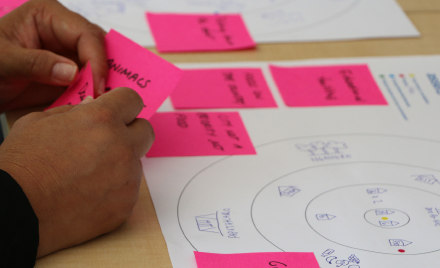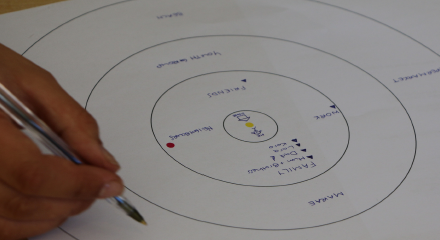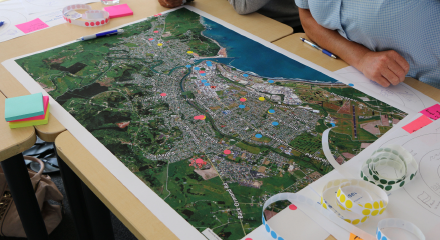Design process: Develop
The Develop phase in my research looks to explore a range of ideas to suit my community’s needs identified in the Define phase.
One way of doing this was to co-design with the community
to come up with new ideas for tsunami communication for their own community. I decided to do this through a workshop where I encouraged people to share their stories and experiences by mapping them to their local environments. I printed a series of posters and story cards that encouraged participants to draw, write and talk about tsunami and earthquakes in their community.
Exercise 1: Participatory asset mapping
Participatory asset mapping is a combination of participatory mapping (community members identifying their own people, places and experiences based on their community onto a map) with asset mapping (identifying community assets like behaviour, knowledge and skills that support resources for individuals and collective groups in a community (Janice, Burns, Dagmar & Silvia, 2012). Together these terms create participatory asset mapping which was an activity I used to map a scenario of a tsunami risk situation with members of my community in Tūranga.
The centre circle (see Figures 25 and 26) is where the participant places themselves and as the circles radiate outwards they begin to place the most important things they consider in their lives to the less likely experiences they have within the community. I gave my participants the task of completing their own individual asset maps by identifying on the map their important locations, people and places that could inform their decision making regarding a tsunami risk situation. From those individual maps the participants were asked to share their assets maps in a group of four people to discuss how they would respond to a tsunami event. The conversations between the workshop participants were enlightening to this research. The dialogue consisted of their own personal experiences and how they planned to prepare for such an event. I then asked the participants to transfer their own individual asset maps on to one large map (see Figures 27 and 28). This created an immense amount of discussions between participants that visualised areas of importance in their community but also whanau structures in regards to how they needed to plan for a tsunami emergency.
Exercise 2: Sharing stories
In the second exercise I invited the community to share their experiences with earthquakes and tsunami warnings using story cards (see Figure 29). The story cards were separated into four groups using a colour coding system:
- Blue = Tsunami
- Green = Earthquakes
- Red = Time
- Yellow = Response
(see Figure 31).
The colour system was used as a way to break down the information collected during the sharing process but also in the analysis phase where I could step back and see the coloured trends. The purpose of this exercise was to share people’s responses to earthquakes and tsunami and whether or not they were aware of the idea that a local tsunami could be triggered by an earthquake and that the response time could be less than 20 -15 minutes for evacuation. Everyone was encouraged to share their stories and put their cards onto a map of Tūranga (see Figure 32). The map acted as a canvas for contextualising my participants stories.
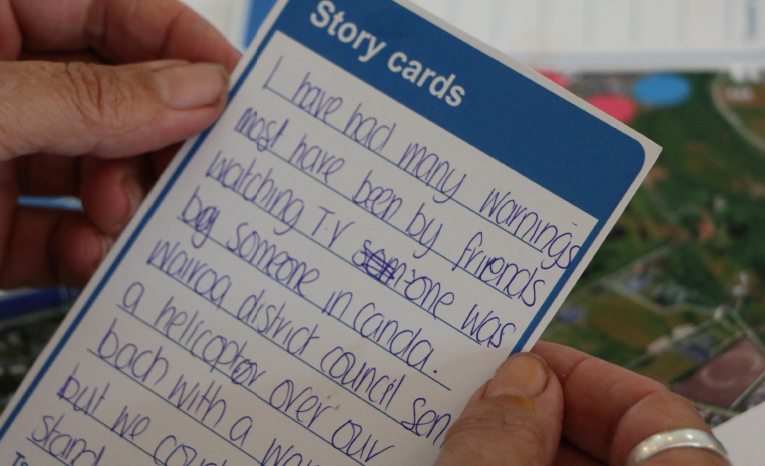
Figure 29: Participatory workshop: Story cards
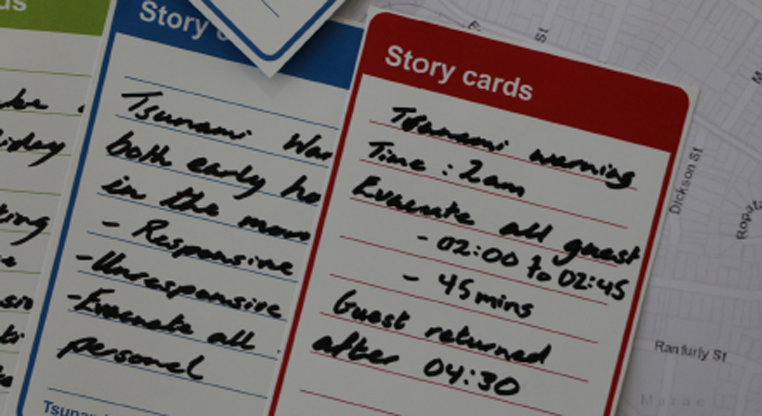
Figure 30: Participatory workshop: Participant’s story about tsunami
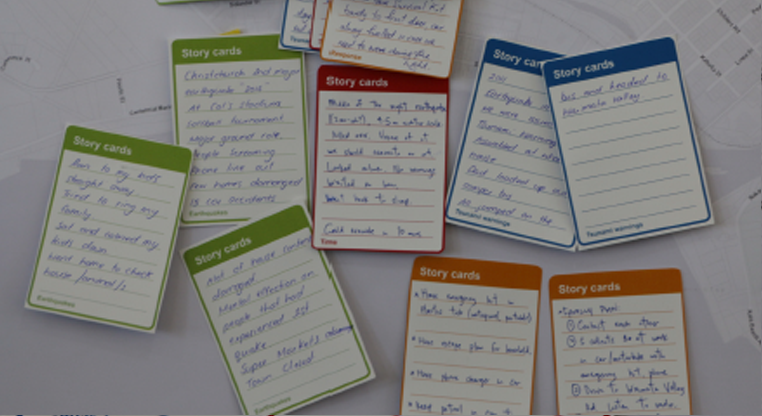
Figure 31: Participatory workshop: Different types of story cards

Figure 32: Participatory workshop: Mapping story cards to large maps of Tūranga on the walls
Exercise 3: Building narratives
The last exercise used boxes, words, papers and pens to build new tsunami communications for Tūranga. When I conducted my interviews I learnt that having practical tools like the laminated map and coloured pens enabled conversations to flow freely without the need for directing the conversation at me. This led me to think about new ways of collecting information in preparation for my participatory workshop. I reflected back on my research in the Discover phase and utilised the idea of core drilling briefly mentioned in my ‘Discover; Understanding the Hikurangi Plate boundary’ section.
The scientific method of drilling into the earth to collect data about
paleotsunami can also reflect my principle of whakapapa, I see the layers of the earth collected in drilling as the whakapapa of previous tsunami in Tūranga.
Therefore the idea of creating layers of information to build narratives of place gave reasoning behind utilising the method of building structures out of cardboard boxes and using tangible methods of making to form the basis of this workshop. Participants were split into groups of four and asked to build new tsunami communications for Tūranga. The process of making tsunami communication structures took 40 minutes and consisted of each group, using pre-made words to prompt conversations about design, science, tsunami and local knowledge combined with boxes to build levels.
It was fascinating to watch each group discuss, negotiate and input ideas toward building their own tsunami communication structures. Each structure was unique and specific to the group that made them. As the facilitator I encouraged the teams to utilise the data collected in the previous exercises to drive the rationale behind their designs. At the end of the exercise each team reflected back to the group their own ideas. These are the main concepts that were captured in their tsunami communication structures.
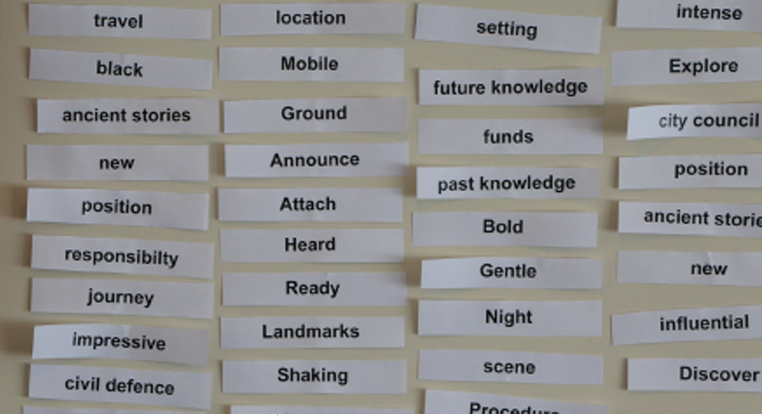
Figure 33: Participatory workshop: Participatory workshop: Word prompts on the walls

Figure 34: Participatory workshop: Building narratives
- Team One: Different stages of responding to a tsunami event representative in the different levels of the structure. Confusion > Organised > Connected (see Figure 35 ).
- Team Two: Navigation by sounding an alert and showing directions plus community engagement through schools and acknowledging local knowledge (see Figure 36).
- Team Three: Communicating information by using the structures to talk to one another. The use of colour is important to identify which area of risk you are in e.g. safe or danger zones (see Figure 37).
- Team Four: Educational structure with science information. Use
light as a beacon and the idea of sound connected to the cracking of Rūaumoko was discussed (See Figure 38).
Collaborating with my community through the method of co-design enabled this research to develop meaningful
new narratives that are relevant to my community. More importantly the outcome of this workshop enhanced community conversations about raising tsunami risk in Tūranga and generated new ideas for tsunami communication in Tūranganui-a-Kiwa.
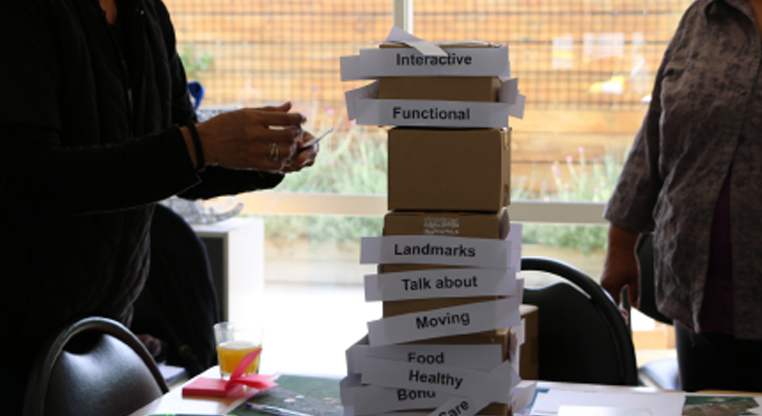
Figure 35: Participatory workshop: Team 1
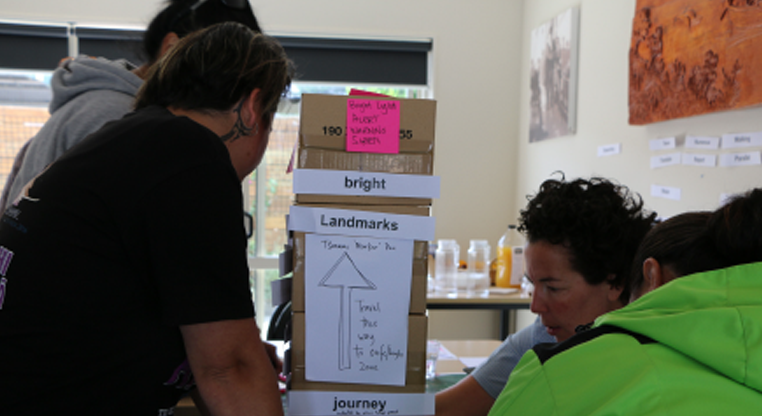
Figure 36: Participatory workshop: Team 2
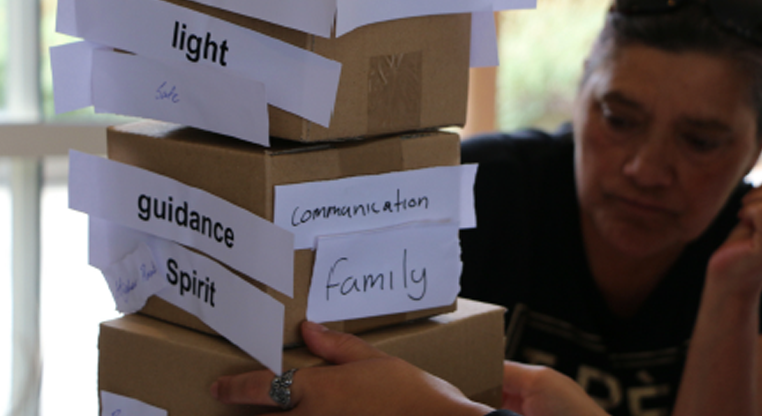
Figure 37: Participatory workshop: Team 3
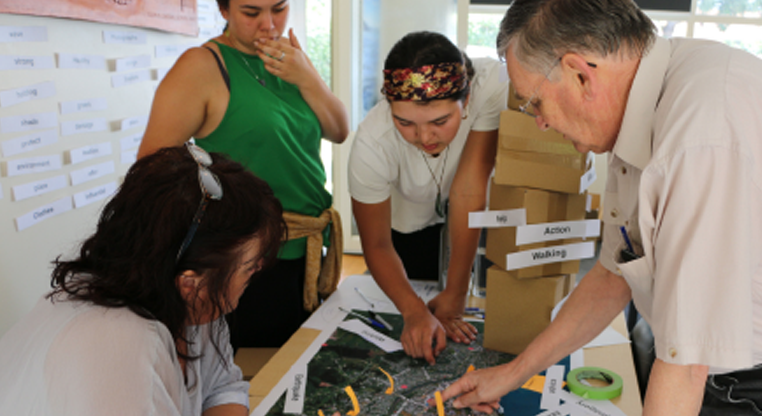
Figure 38: Participatory workshop: Team 4
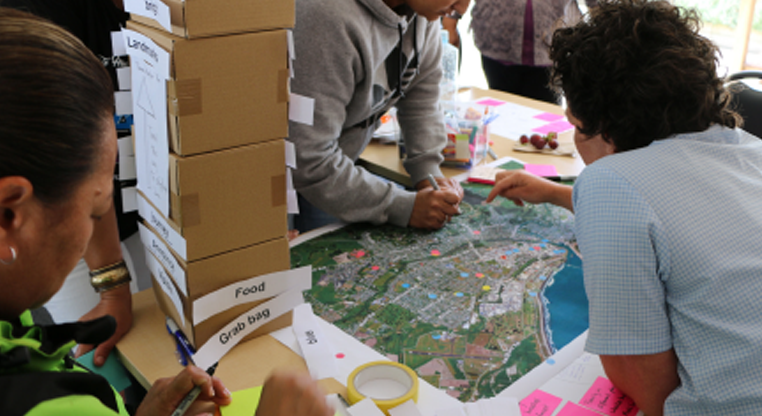
Figure 39: Participatory workshop: Placing where the structures should go on the map
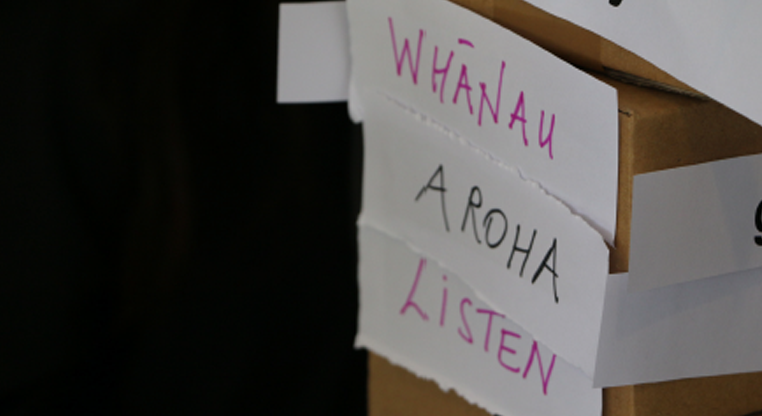
Figure 40: Participatory workshop: Important principles to consider in the design
